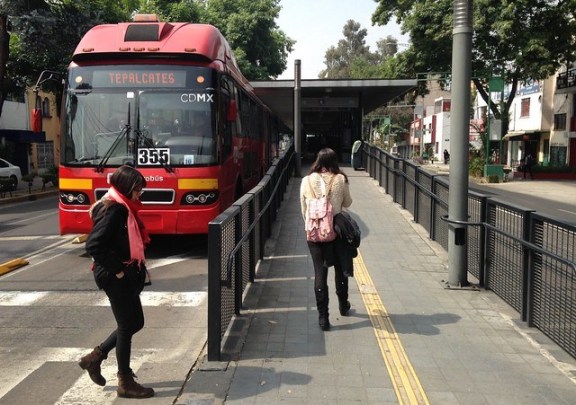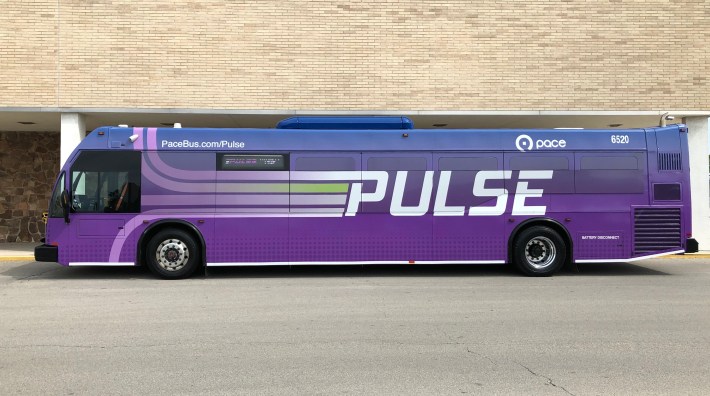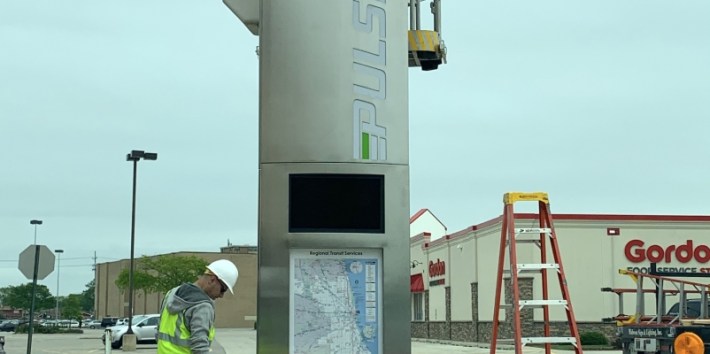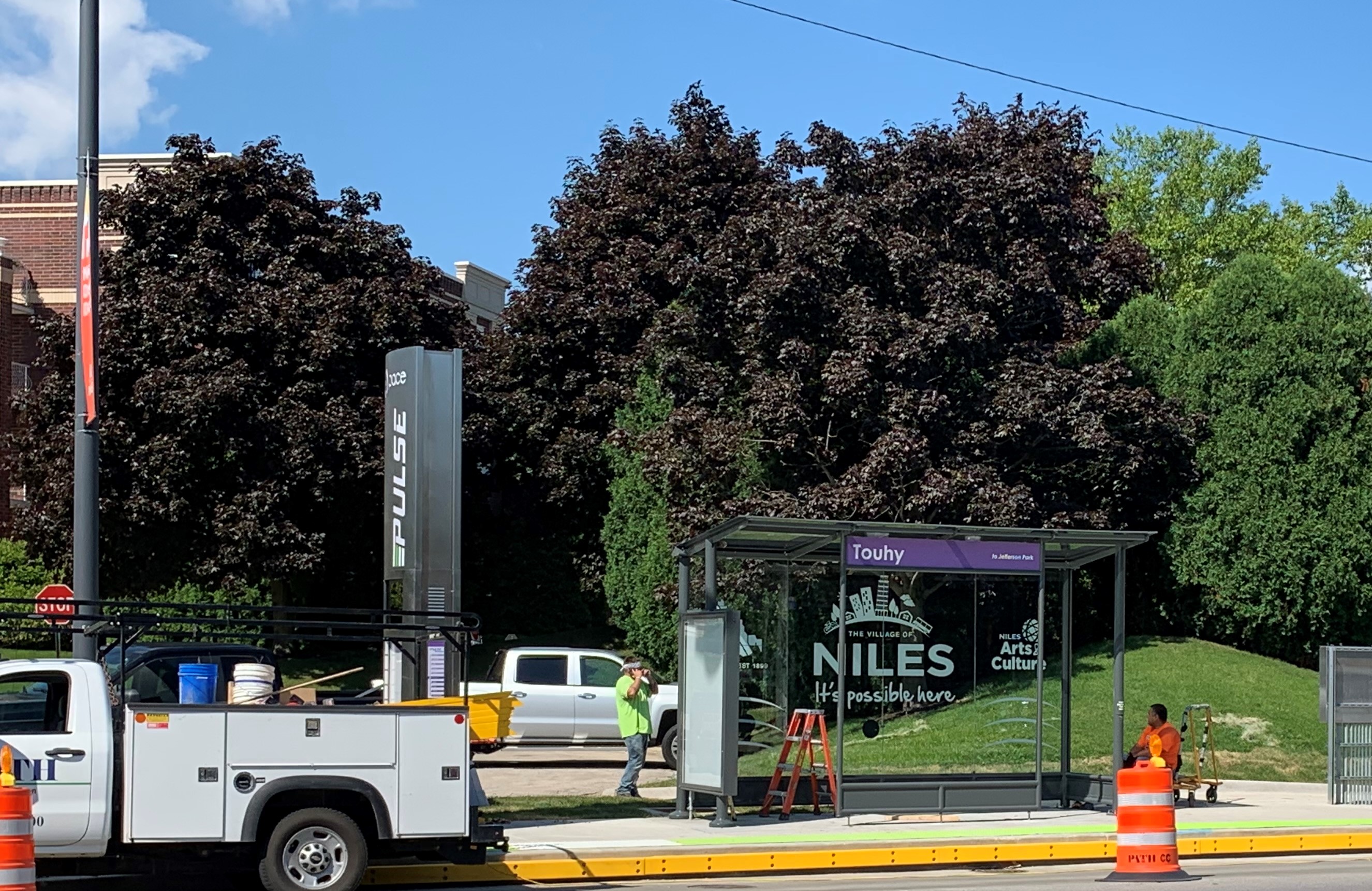Let's get one thing straight. Pace's Pulse bus service, which kicks off this Sunday, August 11, on Milwaukee Avenue, is not bus rapid transit, even though that's what the suburban transit agency called it in a recent press release.
We should avoid watering down the term bus rapid transit, which is supposed to refer to bus service that moves as fast as decent subway or elevated train service. Systems that have accomplished this level of service, in cities like Bogotá, Mexico City, and Los Angeles, have done so by using a variety of robust time-saving features, including prepaid, all-door, level boarding; stations and platforms located in the center of the street; limited stops, well-enforced car-free lanes; and/or traffic signals that prioritize transit.

Chicago's Loop Link express system shouldn't be classified as bus rapid transit. It's not a bad project, in that it involved reconfiguring streets to prioritize transit, walking, and biking; it has calmed traffic; and it has raised the profile of downtown bus service. But it's definitely not rapid. Although it has resulted in some modest speed gains, the buses still generally move at walking-to-jogging pace. That's because because the only time-saving features are level boarding, limited stops, poorly enforced bus-only lanes, and some minor signal prioritization in the form of a few stoplights that give buses a head start before other drivers get a green.
The Milwaukee Pulse route will have even fewer timesaving features than Loop Link, just raised boarding platforms, limited stops and transit signal priority, so it's unlikely to have a dramatic effect on trip times. The bus rapid transit label definitely doesn't fit. (Pace apparently acknowledged that fact in its previous term for the service "arterial rapid transit.)

That said, if we're going to have an efficient, sustainable, and equitable regional transit system, improving suburban bus service is a major piece of the puzzle. So even relatively modest initiatives like Pulse are a step in the right direction.
The new Milwaukee Avenue service will run along Milwaukee Avenue between the CTA Jefferson Park Transit Center and Golf Mill Shopping Center in Niles. "Pulse represents the next generation of Pace service," said Pace Chairman Richard Kwasneski in a statement. "The frequency and affordability of this service will improve access to jobs, education, medical care, shopping and entertainment for the residents we serve."

Most of the features of Pulse have nothing to do with speeding up buses, but are about advertising the service and providing a few comforts and conveniences for riders. The new purple buses branded with the Pulse logo are equipped with Wi-Fi and USB charging ports. The stops will have raised platforms, heated shelters with seating, snow-melt pavement, and bike racks.
These perks can help boost ridership. But a fair amount of the budget appears to have gone towards installing giant stainless steel kiosks with local and regional maps and real-time bus arrival information. Arguably, more focus should have been placed on "go" and less on "show."

The service will operate on weekdays between 5 a.m. and midnight with 10-minute frequency during rush hours, 15-minute frequency during non-peak hours until 10 p.m., and every 20 minutes from 10 p.m. until midnight. On Saturdays, Pulse service will begin at 5:30 a.m. and on Sundays it will start at 6 a.m. Service on both Saturday and Sunday will run until midnight. On weekends and holidays, Pulse will run every 15 minutes until 10 p.m. when it will transition to every 20 minutes.
Pace hasn't finished building all of the stations yet, but plans to do so this fall. In the meantime, passengers may have to use a temporary bus boarding area in some locations after the August launch. The launch of the Pulse Milwaukee Line corresponds with a reduction in frequency on the mostly-overlapping Route 270. Route 270 will continue to make all local stops.





